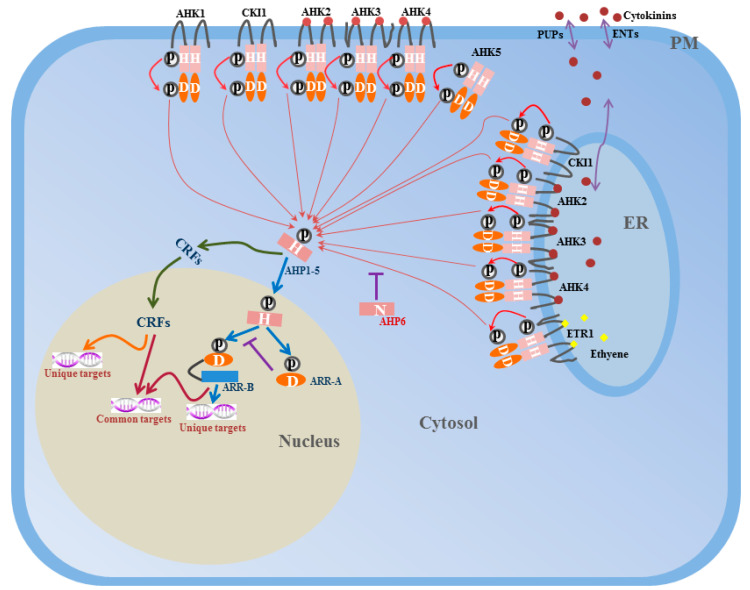Figure 1.
Model for two-component system signal transduction pathway in Arabidopsis. Signal perception induces autophosphorylation of the conserved histidine residue (H) in the histidine kinase (HK) domain of AHKs localized in the PM or ER. Then the phosphoryl group (P) is subsequently transferred to a conserved aspartate residue (D) of the C-terminal receiver domain. AHP proteins accept the signal from AHKs, and transfer the phosphoryl group to the ARR-A or ARR-B. AHP6 lacks the conserved histidine residue and negatively regulate phosphate transfer process. ARR-B are transcription factors which could positively regulate downstream targets while ARR-A negatively regulate ARR-B expressions. As a parallel branch, AHP proteins may also transfer the phosphoryl group to another transcription factors, cytokinin response factors (CRFs). Upon phosphorylation, CRFs shuttle from cytosol to the nucleus and regulate downstream targets. CRFs and Type-B ARRs share some common targets while also having their own specific targets. Cytokinin and ethylene are indicated by red dot and yellow diamond, respectively. PUPs (purine permeases) and ENTs (equilibrative nucleotide transporters) are cytokinin transporters. Figure indicates a whole cell. ER, endoplasmic reticulum; PM, plasma membrane; H, histidine residue; D, aspartate residue; P, phosphoryl group; ARR-A, Type A ARRs; ARR-B, Type B ARRs.

